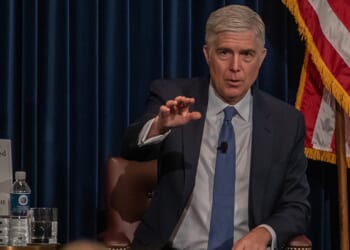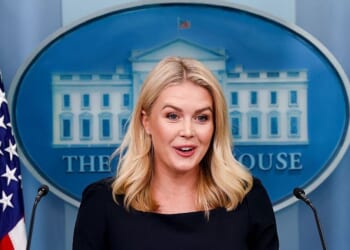Through forums and high-level summits, China is institutionalizing Arab partnerships, signaling long-term commitment to the Middle East.
In the twenty-first century, China has shifted its foreign policy focus towards cultivating a global network of partnerships to expand its strategic influence. Unlike Western traditional alliances, which rely on formal defense treaties, China’s diplomatic framework is characterized by a flexible, interest-driven partnership network.
These partnerships enable China to maintain diplomatic adaptability while expanding its global influence. They also facilitate collaboration amid inevitable geopolitical conflicts, allowing China to engage with diverse nations while preserving its strategic objectives. As Beijing continues to rise as a global power, its partnership-based foreign policy will play a crucial role in shaping its interactions with the international community and its efforts to reform the global order.
China’s Global Partnerships Structure
China’s diplomatic strategy employs a sophisticated hierarchy of partnerships to categorize its international relationships, reflecting varying levels of cooperation and strategic importance. While not officially codified, these partnerships can be broadly understood through descriptors such as “all-weather,” “comprehensive,” “strategic,” and “future-oriented,” reflecting varying levels of cooperation. The unique diplomatic labels assigned to each country indicate a tiered and tailored approach to international engagement, allowing for maximum flexibility.
Since the end of the Cold War, China has established over twenty types of partnerships across nearly 100 countries and more than ten regional organizations, including the European Union, the African Union, ASEAN, and the Arab League. These partnerships are structured hierarchically and range from friendly cooperative partnerships, primarily focused on trade, to comprehensive strategic partnerships with the highest level of security and military coordination engagement.
Beijing has structured its partnerships in the Persian Gulf into three broad tiers, reflecting each country’s geopolitical and economic significance. The first tier consists of a “comprehensive strategic partnership” with Iran, Saudi Arabia, Bahrain, and the UAE, highlighting their importance in China’s energy security and regional diplomacy. The second tier includes “strategic partnerships” with Iraq, Kuwait, Oman, and Qatar, signaling strong but less comprehensive engagement.
The third tier, which includes Yemen, involves “friendly cooperative relations” with a more limited scope. This tiered approach reflects China’s pragmatic and interest-driven diplomacy, allowing it to deepen economic and security ties while maintaining a careful balance in a geopolitically volatile region.
By fostering partnerships, China ensures continued access to vital energy resources, expands its economic footprint, and enhances its regional influence without overtly challenging the existing geopolitical order. This strategy highlights its ability to navigate complex rivalries, leveraging economic diplomacy to solidify its role as a key external player in the Persian Gulf.
Community Partnerships and “New Era” Framework
The “Community of Common Destiny” (CCD) and the “New Era” framework are central pillars of President Xi Jinping’s contemporary diplomatic strategy. These concepts reflect China’s vision for reshaping the global order in alignment with its strategic ambitions and countering U.S. influence.
The CCD framework has evolved into a key instrument of China’s foreign policy, reflecting its ambition to cultivate an international environment accommodating its governance model and leadership aspirations.
China has signed CCD agreements with at least twenty-two nations and potentially more, as some countries recognize the CCD concept without formal contracts. In doing so, Beijing signals diplomatic alignment and fosters a network of states that, if not fully committed, at least acknowledge its vision for global cooperation.
Meanwhile, the New Era framework, enshrined in the Chinese Communist Party’s constitution in 2017, underscores China’s perception of a shifting global power dynamic. This concept is not merely rhetorical; it reflects a strategic recalibration in Beijing’s approach to international relations, emphasizing China’s leadership in shaping a post-Western global order.
Countries designated as New Era partners typically share, or at least accommodate, China’s geopolitical outlook, particularly in resisting Western-led governance frameworks and economic influence. Together, these frameworks exemplify China’s efforts to establish an alternative global architecture that consolidates its influence while challenging the hegemony of traditional Western powers.
Chinese Partnerships in Africa and the Middle East
The 2024 Forum on China-Africa Cooperation (FOCAC) summit marked a pivotal shift in China-Africa relations by elevating its partnerships with all African nations. Beijing’s strategic ambition to consolidate its influence on the continent amid shifting global power dynamics is reflected in the reclassification of these ties as an “All-weather Community with a Shared Future for the New Era.” This transition underscores China’s deliberate positioning as the preeminent external actor in Africa, notably as Western influence diminishes.
China’s expanding footprint in Africa carries profound geopolitical ramifications, directly challenging U.S. strategic interests and reshaping the international order. As Beijing strengthens its engagement, African nations will likely recalibrate their approach, seeking more balanced partnerships that align with their developmental aspirations and enhance their bargaining power. The trajectory of China-Africa relations will thus play a crucial role in redefining global geopolitics, with far-reaching consequences for the evolving balance of power.
Like in Africa, China’s approach to the Middle East reflects a blend of economic pragmatism and strategic diversification. It is primarily characterized by bilateral engagements rather than overarching multilateral frameworks like those seen in Africa. These partnerships are rooted in economic cooperation, energy security, and infrastructure investments rather than multilateral diplomatic initiatives.
Despite China’s growing presence in the Middle East, its influence is moderated by several factors, including regional complexities, geographic limitations, and the strategic agency of Middle Eastern states. The United States’ continuing regional security dominance also constrains China’s broader geopolitical ambitions.
Nevertheless, China has steadily expanded its partnerships. Even Israel, a traditional U.S.-ally, has a distinct “Innovative Comprehensive Partnership” with China, reflecting its unique technological and economic collaboration focus.
China has strategically utilized regional diplomatic platforms to strengthen its relationships with Arab states. The China-Arab States Cooperation Forum (CASCF), established in 2004, has played a crucial role in advancing China-Arab relations.
China’s engagement with the Arab world expanded in 2022, as evidenced by two landmark summits: the inaugural China-Arab States Summit and the China-Gulf Cooperation Council (GCC) Summit held in Saudi Arabia. The China-Arab States Summit culminated in the Riyadh Declaration, which articulated a vision for a “China-Arab community with a shared future in the new era,” reflecting China’s ambition to institutionalize deeper political, economic, and strategic ties with Arab nations.
This trajectory of engagement continued in 2024 with the tenth CASCF Ministerial Conference in Beijing, marking two decades since the forum’s inception. The conference adopted the Beijing Declaration and the Action Implementation Plan for 2024 to 2026.
Furthermore, President Xi Jinping announced a second China-Arab States Summit in 2026, reaffirming China’s long-term commitment to the Arab world. These developments underscore Beijing’s increasing presence in the region and its intention to establish itself as a key player in shaping the Middle East’s future geopolitical and economic landscape.
China’s Evolving Diplomatic Strategy
China’s evolving diplomatic strategy, mainly through its CCD framework, reflects its broader ambition to reshape the global order while expanding its influence across multiple regions. By leveraging a tiered partnership system, China has navigated geopolitical complexities and solidified its presence in key areas such as Africa and the Middle East. The increasing institutionalization of its diplomatic initiatives, including high-profile summits and structured agreements, signals Beijing’s commitment to long-term global leadership.
However, China’s approach is not without challenges, as regional dynamics, strategic rivalries, and the enduring influence of Western powers continue to shape the trajectory of its partnerships. As China deepens its engagement, the sustainability and adaptability of its diplomatic model will be critical in determining its effectiveness in reshaping international relations.
About the Author: Mordechai Chaziza
Dr. Mordechai Chaziza is a senior lecturer at the Department of Politics and Governance and the Multidisciplinary Studies in Social Science division at Ashkelon Academic College (Israel) and a Research Fellow at the Asian Studies Department, University of Haifa, specializing in Chinese foreign and strategic relations.
Image: Lev Radin / Shutterstock.com.















